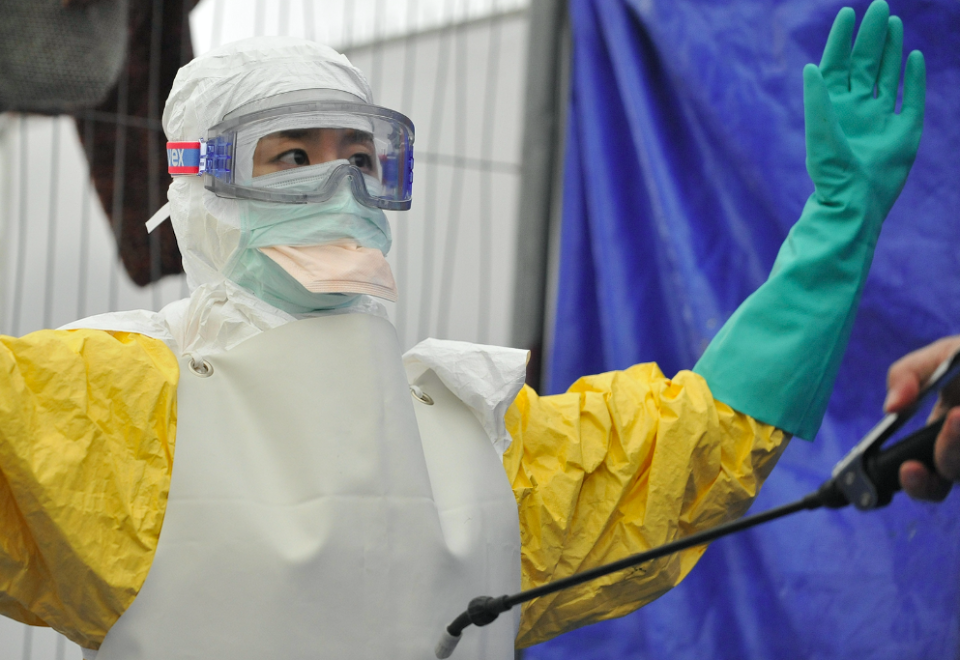Worse than the Black Death: What is ‘Bleeding Eye Fever’?

Four people have been killed and dozens more infected in East Africa by what’s becoming known as ‘bleeding eye fever’, according to reports.
The disease, Crimean-Congo haemorrhagic fever (CCHF), can leave sufferers bleeding from their eyes, mouth and anus.
It is thought to be spreading in South Sudan, where three people have died and up to 60 have been infected.
A nine-year-old girl is also reported to have died from the fever in neighbouring Uganda.
There are fears the outbreak could become worse than the spread of the Black Death in Madagascar last year.
CCHF is transmitted to humans through tick bites or contact with the blood of infected animals, usually during slaughter.
It may then be passed from human to human from close contact with bodily fluids.
MOST POPULAR ON YAHOO UK TODAY
Victoria Beckham slammed for using ‘super-thin’ model in new fashion ad
Couple held after 13 children found ‘chained to their beds’ in California home
Student, 27, moves in with widowed RAF veteran, 95, who was ‘bored of living alone’ to save rent
BA flight grounded after cabin crew refused to fly because plane was crawling with bedbugs
Woman in her 30s kidnapped and gang raped in broad daylight at Essex graveyard
Piers Morgan lashes out at Britain for ‘alienating’ Donald Trump
Here’s what we know about the disease:
WHAT IS CCHF?
Jimmy Whitworth, professor of international public health at the London School of Hygiene & Tropical Medicine, said: ‘Crimean-Congo Haemorrhagic Fever is a viral disease which causes sudden fever, weakness, headache, body pain and loss of appetite.’
WHAT ARE THE SYMPTOMS?
‘People who are infected will often develop a rash on the body, red eyes, and if serious, spontaneous bleeding,’ said Professor Whitworth.
‘It can be fatal in up to half of cases.’
HOW IS IT TRANSMITTED?
Professor Whitworth said: ‘The disease is usually associated with infected livestock or wild animals and is transmitted by ticks.
‘It is a highly infectious disease and person to person transmission can occur from exposure to the blood or secretions of infected patients.’

HOW CAN IT BE FOUGHT?
‘Crimean-Congo Haemorrhagic Fever can be effectively controlled through patient identification, isolation and taking precautions when handling the blood or bodily fluids of an infected person,’ said Professor Whitworth.
‘Cases can be caused by slaughtering animals, so this should be discouraged or conducted under strict controls to minimise the risk of contracting any disease.’
HAVE THERE BEEN RECENT CONFIRMED CASES?
‘Single confirmed cases of Crimean-Congo Haemorrhagic Fever have been reported recently in Mauretania and Uganda, which are so far apart that they are not likely to be linked,’ he said.
‘A cluster of five suspected cases in South Sudan, which is over 200km from the Ugandan border, have been shown to be caused by Rift Valley Fever in preliminary laboratory reports.
‘This is an unrelated virus also associated with infected livestock, which is thankfully milder than Crimean-Congo Haemorrhagic Fever.’
HAS THERE BEEN AN OUTBREAK OF CCHF?
‘Local health authorities and the World Health Organization are monitoring the situation closely,’ said Professor Whitworth.
‘As it is not uncommon for occasional cases or clusters of cases to be reported, it is too early to call this an outbreak.”
(Main picture: Getty)

 Yahoo News
Yahoo News 

